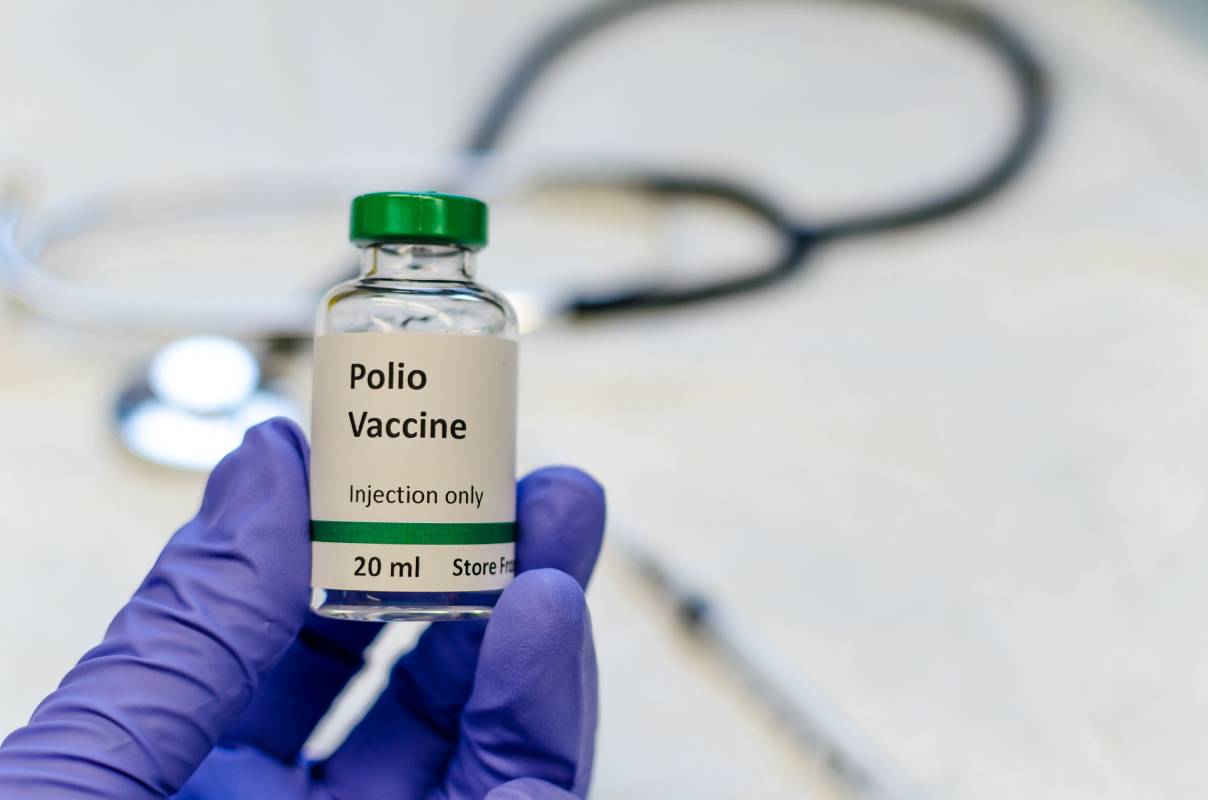
The United States experienced its largest outbreak of polio in 1952, with about 20,000 cases. Shortly after, in 1955, the availability of the inactivated poliovirus vaccine eradicated the disease in the United States 1. However, in July 2022, the New York State Department of Health reported that a person in Rockland County tested positive for polio—shortly after which it was identified in New York City’s wastewater samples. How did polio re-emerge, why, what can be done to curb the spread of new cases?
The Centers for Disease Control (CDC) in September 2022 announced that polioviruses identified in New York met the World Health Organization (WHO)’s criteria for circulating vaccine-derived poliovirus. Indeed, the viral sequences from the polio patient and from three different wastewater specimens harbored sufficient genetic changes to meet the definition of a vaccine-derived poliovirus 2. Globally, the virus’ genetic sequences have been linked to wastewater samples from Jerusalem, Israel, and London, UK—pointing to substantial community transmission 3. Today, the United States now joins a list of approximately 30 other countries to date within which new circulating vaccine-derived poliovirus cases have been identified 4.
Circulating vaccine-derived poliovirus occurs when local immunity to poliovirus is low enough to allow for the prolonged transmission of the original weakened virus from an oral polio vaccine in a vulnerable individual 5. As the virus circulates and accumulates genetic changes, the virus can regain its ability to infect the central nervous system and cause paralysis. Contrary to common misconceptions, circulating vaccine-derived poliovirus cases are not caused by children receiving the polio vaccine.
The treatment of polio remains sparse and minimal. Treatment specifically addresses symptoms and signs of polio, such as fever, but also ensures a certain amount of physical therapy to improve any weakness or paralysis. To date, there remain no Food and Drug Administration (FDA) or internationally-approved antivirals against polio 6. Therefore, it is very important to prevent the emergence of polio in the first place.
The CDC is working closely with the WHO, the Pan American Health Organization (PAHO), and other international public health partner organizations on developing polio prevention measures. In parallel, the CDC continues to support New York State Department of Health’s investigation through ongoing wastewater testing in order to better understand the virus’ spreading dynamics and in order to support vaccination efforts across affected communities 7.
Improving vaccination coverage is the key to preventing additional cases of paralytic polio in the United States, and although no additional new polio cases have been recently identified, New York State will expand its polio vaccination and surveillance efforts. In addition, frequent hand washing, access to clean water, modern sewage systems, and efficient wastewater management further help to prevent the spread of germs, including viruses like poliovirus, and minimize its medical toll.
Meanwhile, proactive public education efforts on the nature and spreading dynamics of the disease, as well as further clinical research on preventive and/or treatment measures for polio and related diseases will remain of the utmost importance now and into the future.
References
- United States confirmed as country with circulating vaccine-derived poliovirus | CDC Online Newsroom | CDC. Available at: https://www.cdc.gov/media/releases/2022/s0913-polio.html. (Accessed: 17th October 2022)
- Updated statement on report of polio detection in United States – GPEI. Available at: https://polioeradication.org/news-post/report-of-polio-detection-in-united-states/. (Accessed: 17th October 2022)
- Outbreak Countries – GPEI. Available at: https://polioeradication.org/where-we-work/polio-outbreak-countries/. (Accessed: 17th October 2022)
- Polio Investigation | CDC. Available at: https://www.cdc.gov/ncird/investigation/polio/index.html. (Accessed: 17th October 2022)

